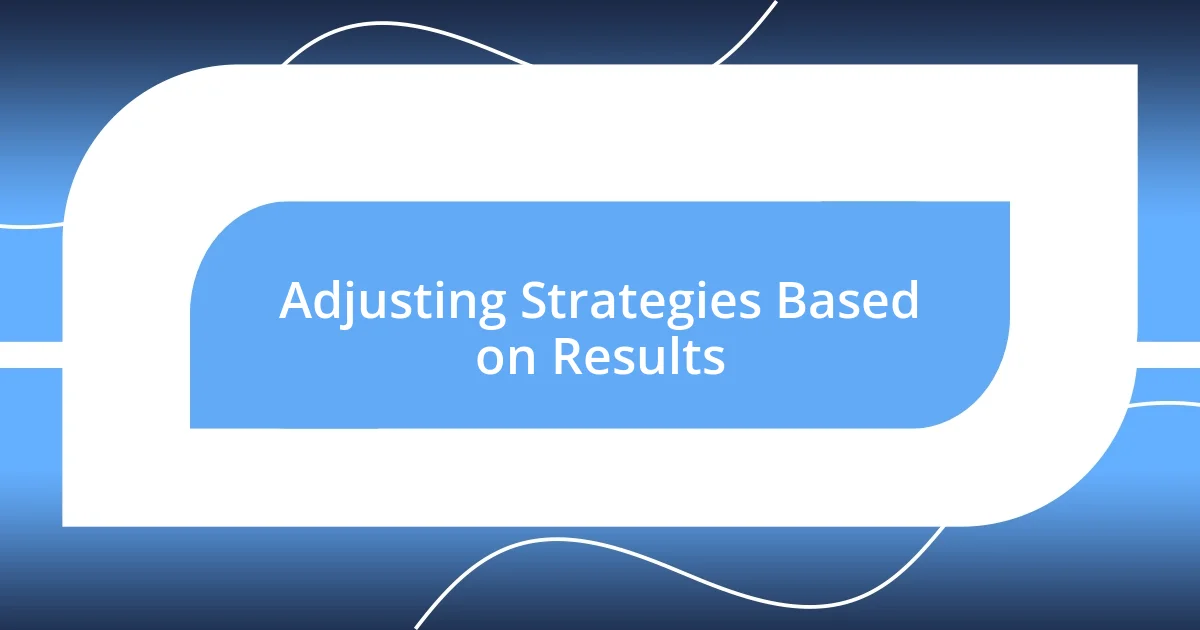Key takeaways:
- Understanding SEO involves foundational elements like keyword research and creating quality content that resonates with the target audience.
- Effective strategies include leveraging long-tail keywords, on-page optimization techniques (like headers and meta descriptions), and building quality backlinks through methods like guest blogging and broken link building.
- Monitoring SEO performance using tools and adjusting strategies based on analytics is crucial for continuous improvement and audience engagement.

Understanding SEO Basics
Search Engine Optimization, or SEO, is like the backbone of digital marketing. I remember when I first dived into it; I was overwhelmed by the jargon. But I quickly learned that at its core, SEO is about making your website more visible to search engines and, ultimately, your audience. Isn’t it fascinating how a few tweaks can dramatically affect your site’s visibility?
One of the fundamentals I discovered early on is keyword research. It felt almost like a treasure hunt. I would spend hours figuring out what terms my audience was typing into search engines, and the excitement of uncovering these insights was incredibly rewarding. It made me realize just how crucial it is to align your content with what people are genuinely searching for.
Another foundational aspect is creating quality content. I’ve found that when I focus on delivering value, not just cramming in keywords, my audience responds. Have you ever read an article that felt like it was written just for you? That’s what good content does—it builds a connection. It’s not just about ranking; it’s about creating a relationship with your readers that keeps them coming back for more.

Identifying Target Audience
Identifying your target audience is like finding the key to a locked door. I remember a project early in my SEO journey where I thought I understood my audience well, only to discover they weren’t interested in the topics I was covering. This realization hit home; I needed to dig deeper. Understanding who your audience is not only improves your content strategy but also boosts engagement.
To narrow down your target audience effectively, consider these steps:
- Analyze current customers: Look at your existing customer base. What are their demographics, interests, and behaviors?
- Conduct surveys: Don’t hesitate to ask your audience directly what they want. It can be enlightening.
- Utilize social media insights: Platforms like Facebook and Instagram have valuable analytics to help you understand who is engaging with your content.
- Research competitors: Observe who their audience is and find gaps in content they may not be fulfilling.
Each of these strategies has shaped my approach to understanding my audience better, leading to more tailored and resonant content.

Keyword Research Strategies
When it comes to keyword research strategies, I’ve learned that starting broad and then narrowing down is often the best approach. Initially, I would brainstorm keywords related to my topic, jotting down everything that came to mind. It felt like constructing a web, and each strand represented a potential path to my audience. From there, I’d use tools like Google Keyword Planner and Ubersuggest to refine my list, focusing on metrics such as search volume and competition. This process transformed my keyword selection into a more strategic endeavor, allowing me to uncover the phrases people genuinely care about.
One strategy I particularly enjoyed was leveraging long-tail keywords. I vividly remember the first time I stumbled upon this concept. Instead of targeting broad keywords, I shifted my focus to more specific phrases that had less competition. As I crafted content around these long-tail keywords, I noticed a significant uptick in engagement. It was almost like speaking directly to a niche audience that felt seen and understood. These keywords bring intent along with traffic, which is invaluable when aiming for conversions.
| Keyword Research Strategy | Details |
|---|---|
| Brainstorming | Generate a list of ideas based on initial thoughts related to the topic. |
| Using Tools | Refine keywords with tools like Google Keyword Planner for search volume and competition. |
| Long-Tail Keywords | Focus on specific phrases to target niche audiences and enhance engagement. |

On-Page Optimization Techniques
On-page optimization techniques are essential for ensuring that your content resonates with both users and search engines. One technique that I often implement is the strategic use of headers. I remember when I first learned about the power of headings in structuring content. It dawned on me that headers don’t just guide readers; they also signal to search engines what the content is about. By using targeted keywords in my H1, H2, and H3 tags, I’ve seen significant improvements in how my content is indexed, making it easier for my audience to find what they need.
Another technique that transformed my approach is the optimization of meta descriptions. I used to overlook these little snippets tucked in the HTML, but I soon realized their potential impact on click-through rates. Crafting compelling meta descriptions is almost like writing an irresistible magazine headline; it has to entice readers while incorporating relevant keywords. I fondly recall one project where a simple meta tweak led to a remarkable 20% increase in clicks within a week. How’s that for a quick win?
Lastly, image optimization played a crucial role in my on-page strategy. Initially, I would just upload images without thinking twice about alt text or file size. It was a waking moment when I realized that optimized images not only load faster but also contribute to SEO. I began compressing images to improve load speed and writing descriptive alt text, which in turn broadened my visibility in image searches. It’s funny how something so seemingly minor can significantly influence user experience and search rankings.

Building Quality Backlinks
Building quality backlinks is a cornerstone of any effective SEO strategy. I remember my early days when I thought simply asking a few friends to link to my site would suffice. It was an eye-opener to discover that not all backlinks carry the same weight. Quality over quantity became the mantra I lived by, as I learned to seek out authoritative sites in my niche that would not only refer traffic but also boost my credibility in the eyes of search engines.
One method I found particularly effective was guest blogging. I can still recall my first guest post on a well-respected industry site. The rush of seeing my name linked back to my platform was exhilarating, but more importantly, it introduced me to a whole new audience. It felt like being invited to a prestigious gathering where I could share my expertise. This tactic not only helped me secure valuable backlinks but also forged relationships with fellow creators. Have you ever felt that sense of community? That connection can lead to more collaboration opportunities down the line.
Another strategy worth noting is leveraging broken link building. I had never considered this until a mentor recommended it. Imagine finding a broken link on a popular blog and reaching out to the author with a helpful replacement link to my content. It felt like I was providing a service while also benefiting my own site. The satisfaction of offering a solution to someone else’s problem, while simultaneously gaining that coveted backlink, is truly a win-win. It’s a gentle reminder that SEO is just as much about building relationships as it is about technical tactics.

Tracking SEO Performance
Tracking SEO performance is more than just crunching numbers. It’s about understanding what those numbers mean for your content strategy. I remember the first time I set up Google Analytics. I was overwhelmed, yet excited to see how visitors engaged with my site. It was like watching an intricate dance; understanding which pages they lingered on and which ones they bounced from provided invaluable insights for improvement.
I’ve also come to appreciate the importance of keyword tracking tools. Initially, I relied on intuition about what keywords would drive traffic. However, when I started using tools like SEMrush and Ahrefs, it was a game changer. I vividly recall analyzing my keyword rankings and discovering several long-tail keywords I hadn’t even considered. They became the backbone of my content strategy, leading to increased visibility and relevance. Have you ever felt a rush of excitement from uncovering hidden gems in your analytics?
Another crucial aspect of tracking is monitoring your page speed and user experience. I still remember feeling frustrated when I found that slow loading times negatively impacted my bounce rates. That realization sparked a series of optimization efforts that made a significant difference. Tracking tools like Google PageSpeed Insights became my best friends as I learned what adjustments helped improve user satisfaction. It was rewarding to see those numbers transform as I invested effort into enhancing my site’s performance. Isn’t it fascinating how small tweaks can lead to substantial results in engagement and SEO performance?

Adjusting Strategies Based on Results
When it comes to adjusting strategies based on results, I’ve learned that flexibility is key. I remember launching a new blog post and initially feeling disappointed with its performance. Instead of throwing in the towel, I dived back into the analytics. By analyzing the traffic patterns, I identified that while the content was solid, the title was lackluster. A simple tweak to a punchier headline brought a noticeable increase in clicks. Have you ever experienced that moment when a small change made a big impact?
Feedback loops are essential in shaping my SEO approach. After implementing changes based on analytical insights, I monitor the outcomes closely. One particular instance comes to mind; I had decided to optimize an underperforming page by incorporating relevant keywords and enhancing the visuals. Watching the gradual rise in its ranking over the following weeks felt invigorating. It was a reminder that sometimes, patience is just as vital as action. Have you felt that thrill when your efforts finally pay off?
Moreover, I embrace the idea of continuous experimentation. I often run A/B tests on various elements of my website, from call-to-action buttons to layout changes. I vividly recall one test where I modified the placement of a subscription prompt. The results weren’t just numbers; they were a significant boost in engagement and conversion rates. Isn’t it thrilling to realize that a bit of curiosity and strategic adjustment can lead to substantial growth? Engaging with results and adjusting strategies accordingly has not only refined my SEO efforts but also deepened my understanding of my audience’s behavior.












